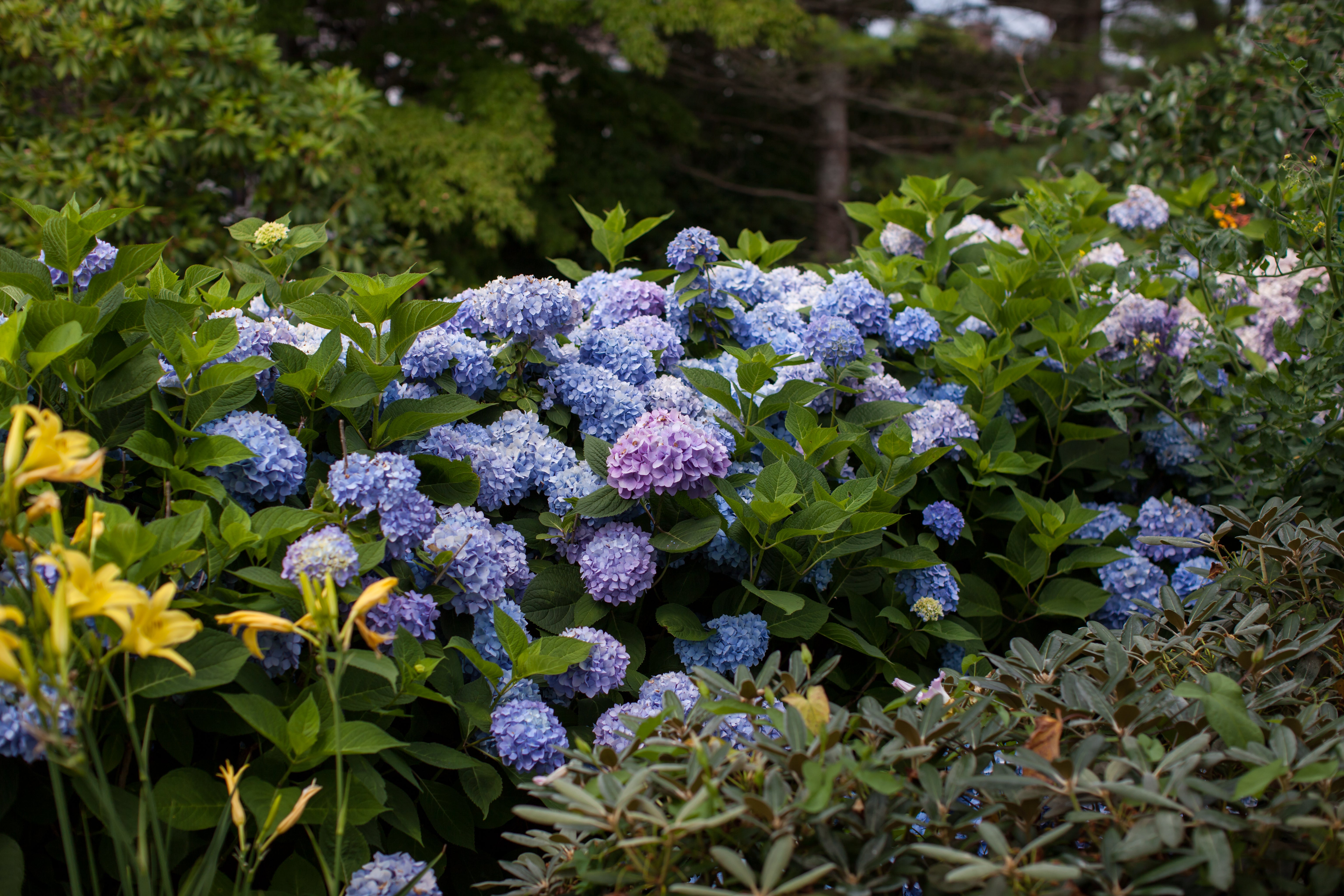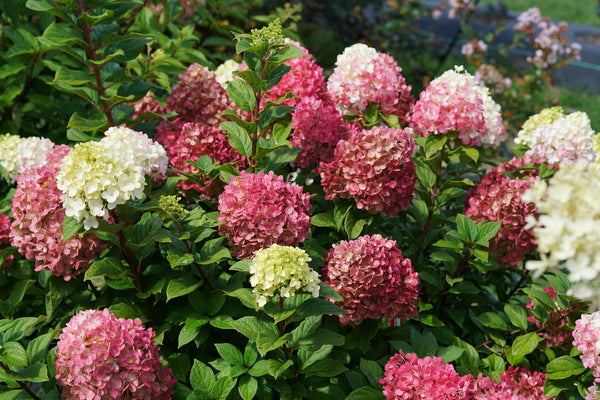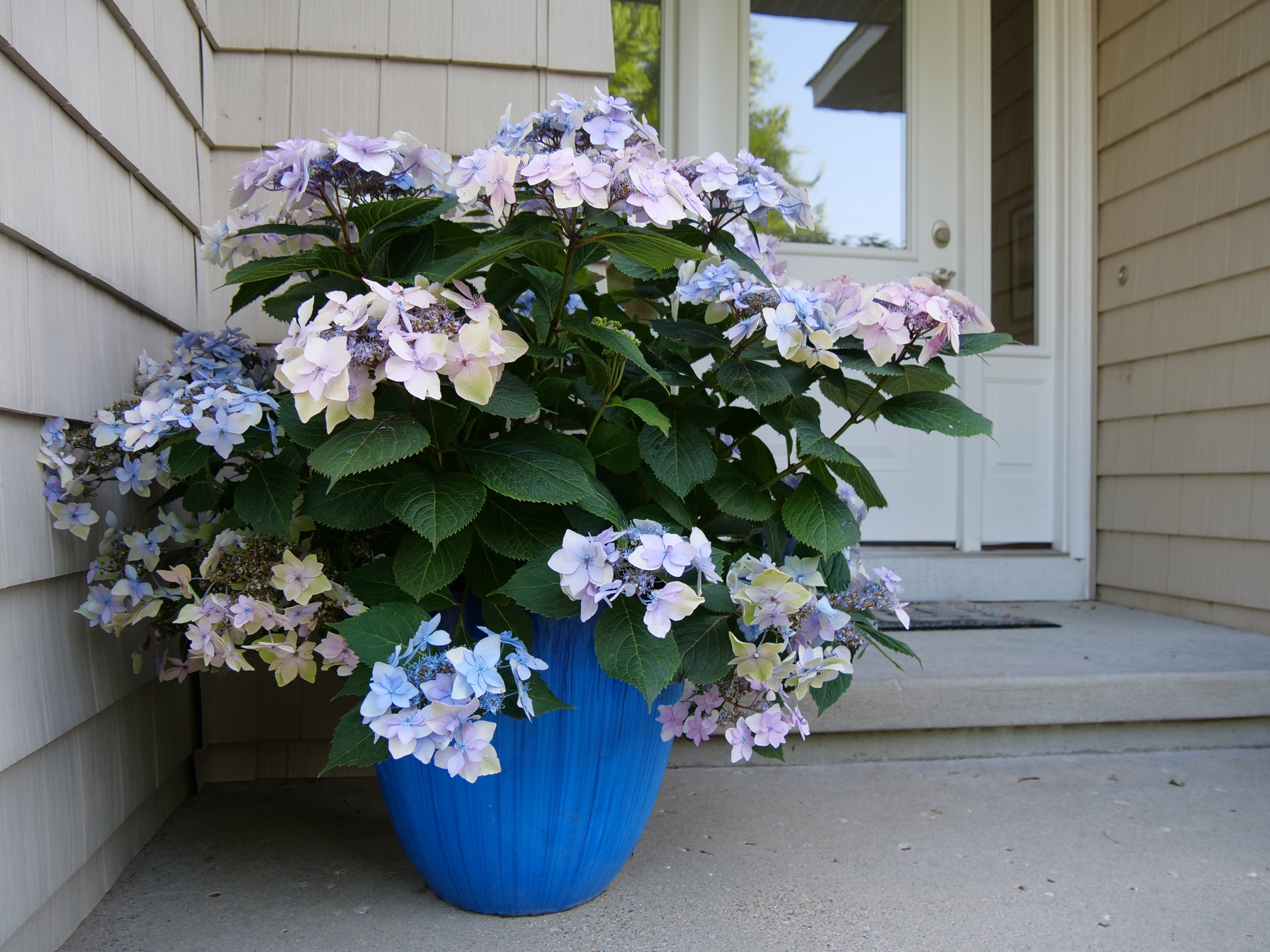






So Many Types of Hydrangeas! Which one is right for me?
When most people think of hydrangeas, what immediately comes to mind is the iconic blue flowers of the classic mophead hydrangea. And for good reason! They are some of the most beautiful flowering shrubs around. They are not, however, the only hydrangea worth having. Depending on where you live and what you are looking for, there are many types of hydrangea that fit the bill. Let me give you the rundown on just a few.
Hydrangea macrophylla, also known as bigleaf hydrangeas, generally have big round colorful flower heads although some varieties have lace cap flowers too. The colors range from a brilliant blue to a vivid pink depending on the acidity of the soil they are planted in, Acidic soil (PH lower than 6.5) results in blue flowers. Alkaline soil (PH above 7.5) results in pink flowers. A neutral PH (6.5 to 7.5) will give you a mix of both or purple blooms. To increase acidity for blue flowers, you can add aluminum sulfate to your soil. To get pink flowers in acidic soil, you can amend it with lime. You can find both at any local garden center. Be careful not to overdo it to avoid damaging the plant and remember it is a gradual process.
Most big leaf hydrangeas are USDA zones 5 to 9. They set their flower buds in fall for the following year, so a harsh winter can kill them which used to be a big reason to steer clear of these in colder climates. Not any more though: newer varieties such as Endless Summer® or the Let's Dance® series of Proven Winners® hydrangeas have solved this problem by having the ability to bloom on "new wood", which means that even when the older buds don't survive the winter, new ones will form to ensure flowers in the late spring to summer. When selecting a variety, look for one that says reblooming or "blooms on new wood".
These hydrangeas do best in morning sun and afternoon shade. They tend to wilt under too much afternoon sun, but have a remarkable ability to bounce back. Big leaf hydrangeas range in size at maturity from about 2' x 2' (such as the Wee Bit Grumpy® variety) to about 4' x 4' (such as Bloomstruck®).
Hydrangea serrata, or mountain hydrangeas such as Tuff Stuff®, are a more delicate cousin of the mophead. Native to the mountainous regions of Korea and Japan, they tend to be more cold hardy, usually recommended for USDA zones 3 to 8. That makes them great for more northern climates than the bigleaf hydrangea can survive in. Typically, Hydrangea serrata flowers have a lace cap form, with large sterile florets surrounding the delicate, lace-like, fertile flowers in the center. Also like big leaf hydrangeas, colors of these blooms can also be influenced by the soil's pH level, offering hues from soft pinks to intense blues. They are also adaptable to sun or shade but do best when shielded from too much afternoon sun. They tend to be smaller on average, maxing out at about 3' x 3' making them perfect for a border or a smaller space.
Hydrangea paniculata, or panicle hydrangeas, with varieties such as Limelight Prime®, are known for their distinctive cone-shaped flower clusters. Some are rounder and some have looser, more open panicles that expose the fertile flowers within, giving them a more delicate appearance. It is one of the more robust and cold-hardy types of hydrangea , thriving in USDA zones 3 to 8.
Unlike its relatives, Hydrangea paniculata can tolerate full sun, making it a super versatile choice. They are also versatile in terms of size, with a variety for every yard. They range from about 8' x 8', such as Limelight, to only 2' x2' like Tiny Quick Fire®, with lots of varieties maxing out in between such as Bobo®, Firelight Tidbit®, or Little Hottie®. The flowers on these beauties start out green to white and can change to a pink or a deep red as they age, depending on variety. Unlike the big leaf and mountain types, the color change on panicle hydrangeas is not dependent on soil PH. Instead, it is the cool nights of late summer and early fall that starts the process. This means the color change is generally not as drastic in warmer climates.
Hydrangea quercifolia, or oak leaf hydrangeas, are a North American Native. They get their name from the shape of their leaves and have beautiful fall color that ranges from deep red to bronze. Hardy from USDA zones 5 to 9 and well adapted to shade, these hydrangeas are a landscaper's favorite for their low maintenance and showy white, conical flowers that appear in early summer.
Last but certainly not least are the North American native Hydrangea arborescens, or smooth hydrangea, with varieties such as Annabelle and Haas Halo.Their flowers are typically white, although a few newer varieties like Invincibelle Spirit® II bloom a beautiful shade of pink. The straight native species has a beautiful lace cap flower while a lot of cultivars have big clustered blooms similar to big leaf hydrangeas. These hydrangeas are super cold hardy, suitable for USDA zones 3 to 8 and do quite well in shade. One thing to note if you are thinking of incorporating a smooth hydrangea into a pollinator garden is that the big, showy blooms on most hydrangeas are sterile and a lot of times the inner fertile flowers are either absent or difficult for insects to access. So your best bet for pollinators will be a variety like Haas Halo, Pinky Pollen Ring, or the species. But if big showy blooms is the look you're going for, by all means pick any variety you want! We are big believers in pollinator gardens and creating habitat for local wildlife with native plants but there is nothing wrong with having a plant in your yard just because it is beautiful!
Whether you're interested in vibrant colors, pollinator support, or simply adding beauty to your garden, there's a hydrangea for every setting.













